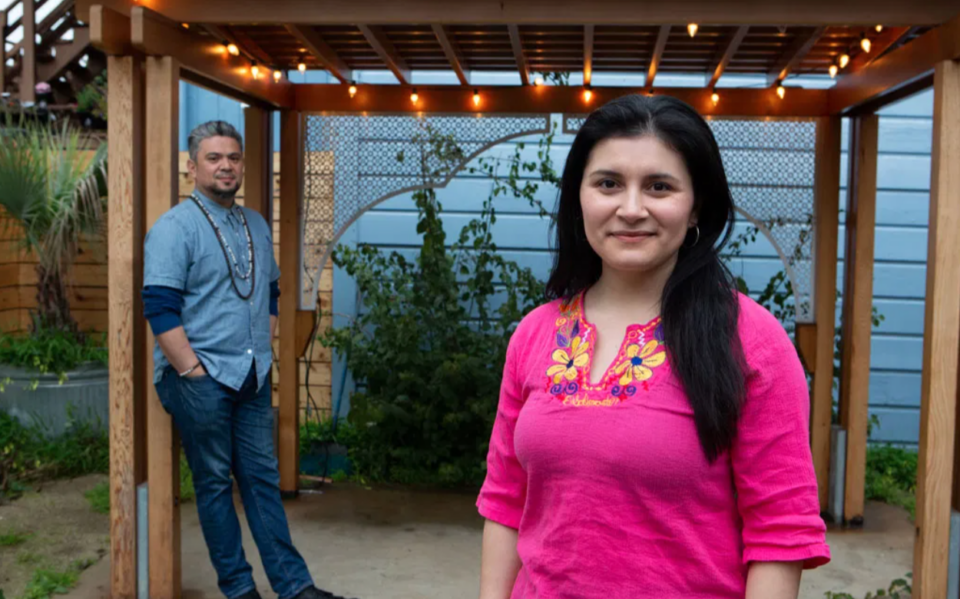In this month’s StoryLetter, written by Angilee Shah, we consider the power of language and what happens when new terms both create more expansive possibilities, or limit us. Dive into the topic below, then read about news from Racial Equity in Journalism Fund grantees. Thanks for joining us.
—Tracie Powell, REJ Fund Program Officer
When Covering Community Means Global
Dear friend,
There is power in giving injustice a name. We have new vocabulary in our everyday speech—from “BIPOC” to “systemic racism”—that helps us quickly advance conversations.
We’ve talked before about some of these terms, what they describe and how they highlight the ways news organizations have done important work over centuries. Sometimes, though, our language can limitour thinking of what these news organizations are and can become.
Here’s an example: In the nonprofit sector of news, grantmaking is often limited to “local” or “domestic” news — but what does it mean when the communities we cover are global or transnational people? People for whom state borders do not limit the breadth of their lives? And do the terms “local” and “hyperlocal” belie the broad needs of globalized communities?
The difference in coverage priorities has a lot to do with the mediums and scale of news organizations, and with whether they are the primary source of news for those communities. It’s not lost on many publishers that their readers often send their local news to family and friends abroad.
“When we talk about local news and information, we always think about the impact we are offering in the local community. But if we are doing news and information about, let’s say, an earthquake in Mexico, that impacts the local community as well.” Hilda H. Gurdian, publisher of La Noticia in Charlotte, North Carolina. “That impacts them in the same way as news about an unsafe neighborhood in this area of North Carolina.”
“When we talk about local news and information, we always think about the impact we are offering in the local community. But if we are doing news and information about, let’s say, an earthquake in Mexico, that impacts the local community as well.” – Hilda H. Gurdian, publisher of La Noticia in Charlotte, North Carolina
Her newspaper and website will draw on AP reporting for international news but also augment it with the work of their own reporters who gather perspectives from places that are connected to North Carolina by migration.
“If we feel like that information will impact our local community, we will give it the coverage it needs. We will not leave them behind,” Gurdian says. (See, for example, this short report on vaccine roll-out in Mexico.)
Not too far away, in Charleston, South Carolina, El Informador’s communities also value international news. They also use a news service, EFE, to include news from abroad in their print and online editions. Editor-in-chief Pedro De Armas wanted the newspaper to feel familiar to the communities they serve.

“We do concentrate on local news. That’s our core and that shows in the engagement of our readers,” he says. They maintain one or two pages of international news in their print editions. Lisa De Armas, director of El Informador, says they often hear, “We love El Informador because it looks like something I could pick up in my own country.”
“Many of our local readers are still interested in what is happening back in their homelands,” says Alexis Terrazas, editor-in-chief of El Tecolote in Northern California. “But another reason why it’s important is that the events that occur in other countries provide a great amount of context as to what happens here.”
He points to their reporting about two years ago from Tijuana, when they sent a photojournalist to shelters that house Central American migrants. “Of course, these migrants and caravans were demonized by the presidential administration of the time, but our reporter was able to capture the human stories and looked at the reasons why people were coming north,” says Terrazas.
Digital-first, younger media organizations like Sahan Journal and Documented approach their local news offerings with a tighter geographic focus. When stories abroad have local angles — such as New York Brazilians’ vote in the Bolsonaro election — co-founder Mazin Sidahmed says they will cover it when they can. They aggregate and link to other outlets when they can’t.
“We don’t want to duplicate efforts. We’re a small team, we only want to be additive,” Sidahmed says.
Kate Moos, managing director of Sahan Journal in Minnesota, also says that they are careful considering their limited capacity. But they still touch on international news.
“Sahan Journal’s audience seems to appreciate it when our stories recognize the global connectedness of their lives,” she says. “So, we just published an op-ed from a man who is in fact going back to Africa — a Somali man going back to Uganda because the United States is so volatile!”
Is that a story about Minnesota? Is it about Somalia or Uganda? Or is Sahan Journal committing an act of journalism that is bigger than “local”? As we create strategies to build the richness of our news ecosystem, we should be careful to not implicitly affect the mission of strong organizations by putting them in buckets that don’t accurately capture the breadth of their accomplishments.
Shout outs
Tell the world about these news organizations using the hashtag #racialequityjournalism! These updates are by Ariam Alula.
- Morgan Elise Johnson and Tiffany Walden of The TRiiBE are named to “The New Power 30” in Chicago Magazine!
- Documented recently won a $900,000 grant from the American Journalism Project to fund new hires including a development director. They’ve also secured a bilingual reporter who will be joining later this year from Report for America. As they continue expanding editorial partnerships with The Marshall Project and THE CITY they will also be hiring a consultant who can lead an information needs assessment among the Caribbean population in New York. Let’s help them share the listing!
- Last month, WURD Radio’s Sara Lomax-Reese and S. Mitra Kalita launched URL Media to support a network of “high performing Black and Brown media organizations” reach more audiences and grow their revenue through partnerships and content distribution. The inaugural group includes WURD Radio, Documented, and Kalita’s newsletter Epicenter-NYC. URL stands for uplift, respect, and love.
- Sahan Journal’s reporting was used in a Teen Vogue story about educators who have been disciplined by their school districts for using “inappropriate” or progressive course materials. The outlet was also featured in this Mpls.St. Paul Magazine timeline of Minnesota’s Alternative Media from 1849 to present.
- El Tecolote will be launching its own podcast, Radio Teco, later this year. The outlet will also be teaming up with a local arts organization to produce events featuring its archival history from the past 50 years. [Image description: Josué Rojas and Fátima Ramírez pose for a portrait at Acción Latina on Jan. 27. Rojas served as Acción Latina’s Executive Director for four years, and Ramírez will take his place as Interim Executive Director. Photo: Sean Reyes]

- Congratulations to Julian Walker, the new CEO of PushBlack! He previously served as acting co-CEO. PushBlack serves 9 million people across platforms, using the power of narrative, especially Black history and news, to educate and activate subscribers to build their personal power and create lasting economic and political change.
Anyone can subscribe to the StoryLetter here.
